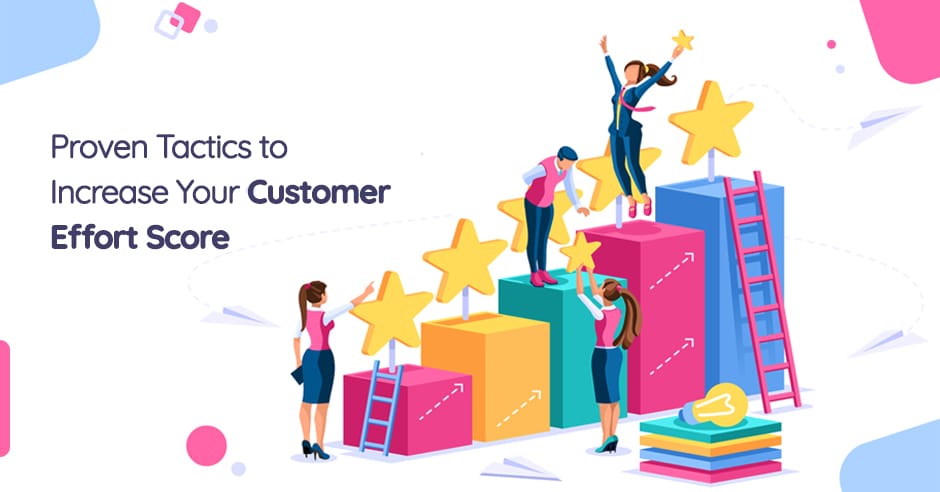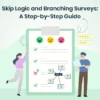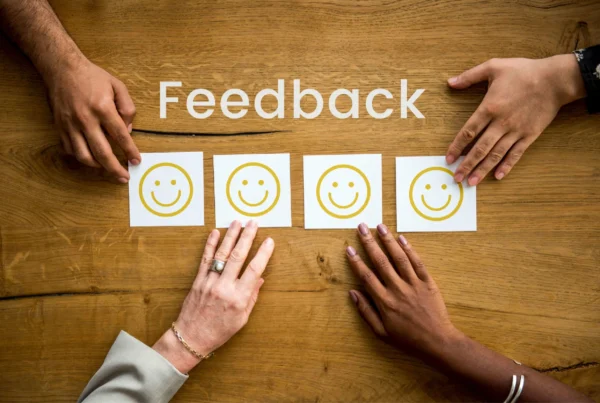Globally, businesses are adjusting how they evaluate customer experience. The Customer Effort Score (CES) is an impactful metric that has been particularly popular lately. Customer Effort Score Software allows businesses to analyze how easy or difficult it is for customers to engage with businesses, whether it is answering questions, buying something, or subscribing to a trial. The basic premise is that customers will demonstrate greater loyalty if they must put forth less effort into it.
Over the last few years, adoption of CES software has accelerated as businesses have shifted from periodic surveys to embedded micro-surveys that trigger quick interaction, giving teams immediate, contextualized insights.
How CES work with Customer Effort Score Software?
A CES survey asks one question based on a particular interaction using a numerical scale, either 1-5 or 1-7. One end of the scale will indicate “high effort”, and the other end of the scale then indicates “low effort.” Scores can be averaged and trended for timeframes for improvements or regression.
Unlock effortless customer experiences! 🚀
Discover proven tactics to boost your Customer Effort Score today. 🌟Modern CES platforms also implement normalization, group segmentation, and benchmark comparison, so teams can compare similar experiences across channels and customer segments.
Advanced CES software has got a major upgrade, with AI-driven analytics combining natural language processing (NLP) with the ability to interpret those open-ended answers customers give. This will uncover deeper customer emotions and their intent behind the score. By combining the numbers with the actual words, CES has turned into a dynamic benchmark for how good a company is at being customer centric.
Measuring Customer Satisfaction
The simpler it gets for customers to navigate different touchpoints, whether it’s online, on the phone with customer support, or in person, the more likely they are to come away thinking of having a positive opinion on the business. The CES software will really understand what customers are feeling, not just if they’re happy, but also if they’re getting frustrated and checking out.
Top organizations now combine CES with CSAT and NPS metrics to take customer understanding to the next level. Together, they provide a comprehensive view of the customer, allowing for evaluation of emotional satisfaction, while also evaluating functional ease all at once. CES facilitates determining what the friction points are, while CSAT signals the emotional ramifications of those friction points, creating a picture of how customers experience all levels of a service.
Following are some proven tactics to improve CES:
- Understanding the current processes: Involves pattern analysis, customer interaction, and strategized problem resolution.
- Effective execution of the strategy: Business needs to lend importance to customers for enhanced experience. Hence, negative customer feedback should encourage problem fixing, reduction in the efforts that customers must put in to resolve the issues, which thereby leads to growth of the business.
- Excellent navigation through digital walkthroughs: Digital walkthroughs can be used to enhance customer satisfaction. These are interactive, step-by-step, highly advanced, and user-friendly. They are instructive and specifically customized for problem resolution.
- Forward-thinking: CES works towards resolving current issues to prevent them from reappearing in the future.
- Addressing the emotional component of business interactions: With the right training, the interpersonal issues can be reduced and eventually eliminated, thereby improving overall customer satisfaction.
- Learning the ‘personality’ of the client: This is to understand the behavior of the client better as well as to avoid any possible friction.
An effective employee experience strategy contributes to better CES performance. When internal processes are streamlined and employees can easily access knowledge bases or AI-driven tools to help customers, customer effort is decreased. This internal alignment ensures that employees and customers experience changes together.
All these strategies are designed to improve customer experience and thereby the Customer Effort Score. Customer Effort Score helps in measuring the amount of customer effort required for a certain interaction with the business. It is a unique and important tool in the customer experience toolkit and can be efficiently used to improve customer loyalty by gaining stern and actionable customer insights. In this regard, customer feedback apps can also be used to boost customer metrics.
Customer Feedback Apps
A customer feedback app comes in handy when used alongside CES software. It gathers customer opinions from multiple sources, enabling to detect problems and act fast on feedback. Feedback apps are more interactive than ever. You can even get people to record video and audio messages, do voice analysis, and predict what might happen next.
For instance, if an app picks up on trends that show a customer is getting frustrated, it can automatically initiate resolving the issue upstairs to a real human who can show the customer some empathy before things go from bad to worse. This helps prevent customers from bouncing off and turns them into loyal supporters in the end.
In addition, using predictive modeling in these tools allows businesses to check customer churn risks before they occur. When teams combine sentiment analysis with behavioral data from CES surveys, they can preemptively engage customers who are dissatisfied with a retention campaign or service intervention, and they can turn that customer from a potential detractor into an advocate.
The Role of Continuous Improvement
Customer Effort Score Software lives on a continuous cycle of feedback, refinement, and enhancement. As businesses keep measuring realtime both quantitative metrics and qualitative data, they can monitor how changes in the process impact customer satisfaction and customer loyalty over an extended period of time.
The newest development in customer effort score software includes CES automation pipelines to automatically trigger prompts for immediate workflow improvements when effort scores fall below a certain level. With automation, bad experience feedback doesn’t go unmonitored. Pain points are responded to immediately.
The Strategic Value of Customer Effort
The Customer Effort Score is now an essential tool in the toolkit of the modern experience-minded organization. It allows organizations to convert ambiguous feedback into usable intelligence. By combining CES data with analytics from customer feedback apps, companies now have a more complete picture of loyalty catalysts and inhibitors.
Enterprises are increasingly linking CES scores to financial KPIs, including retention rate, lifetime value, and customer acquisition cost. The less effort, the better long-term profitability.
Final Perspective
Customer Effort Score (CES) Software is a meaningful action metric that encourages continuous improvement by assessing how much effort a customer has to perform to get things done. When combined with real time feedback, AI powered analysis, and cross team accountability, CES can become a transformative vehicle for simplifying products, improving support, and ensuring loyalty over time.
Organizations that incorporate CES into their operating rhythms and add further rigor with modern analytics and privacy-first approaches, will be best positioned to reduce friction and sustainably grow in the current customer-driven marketplace.








